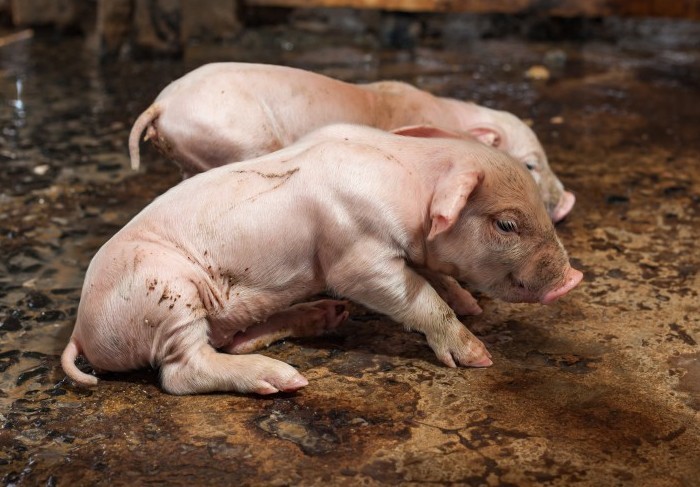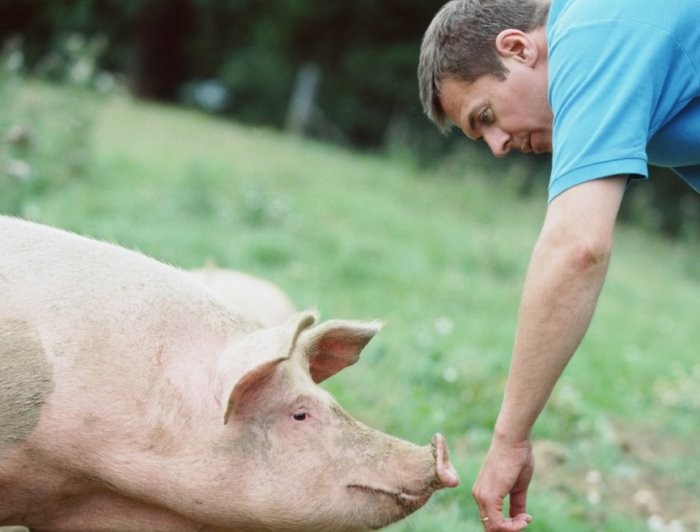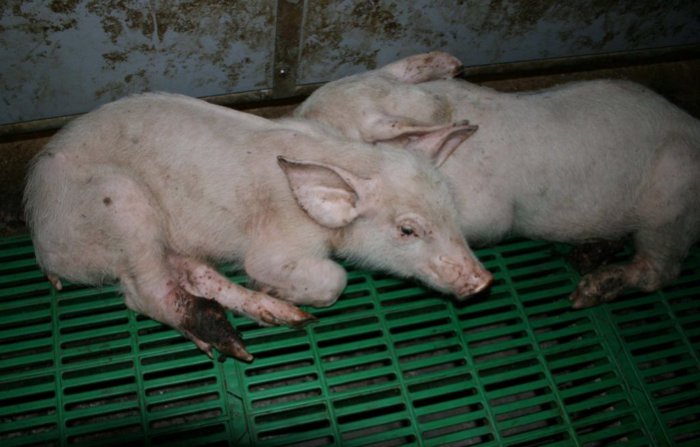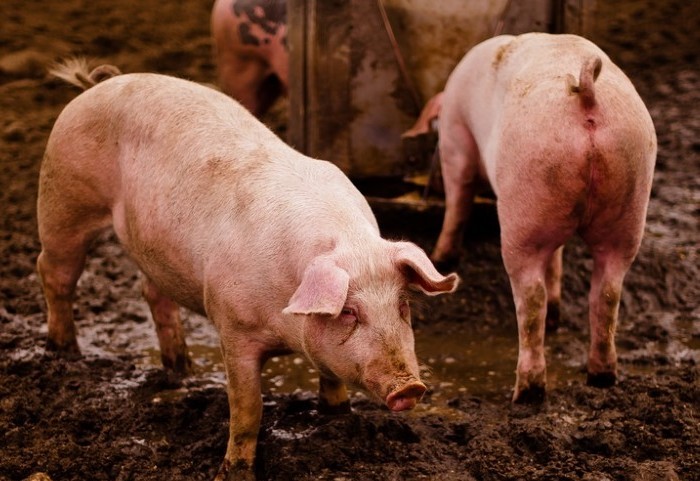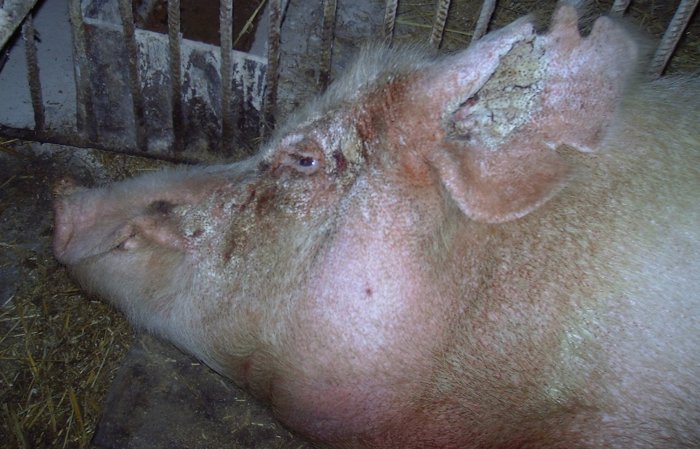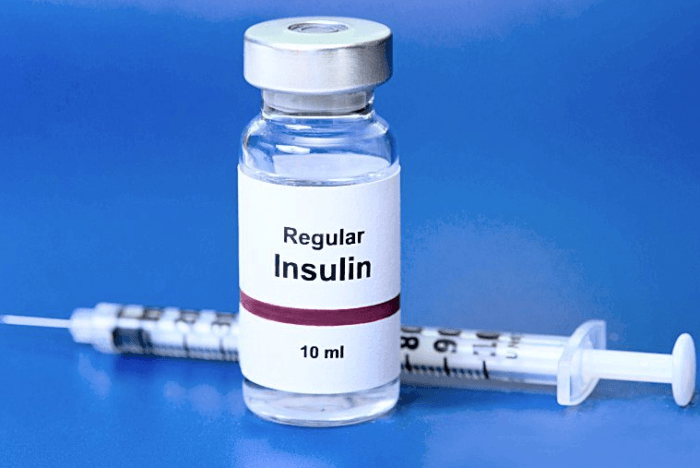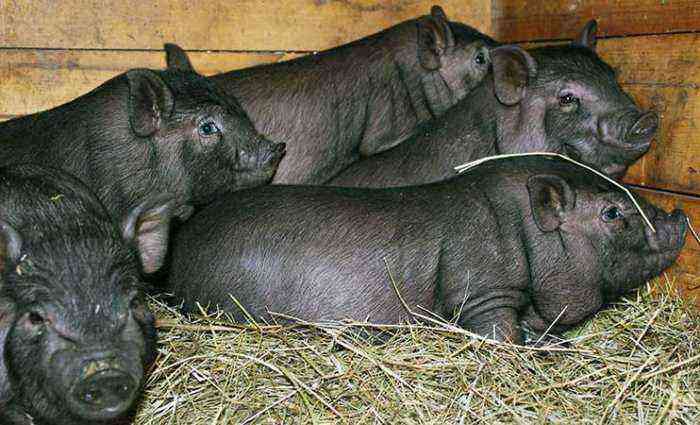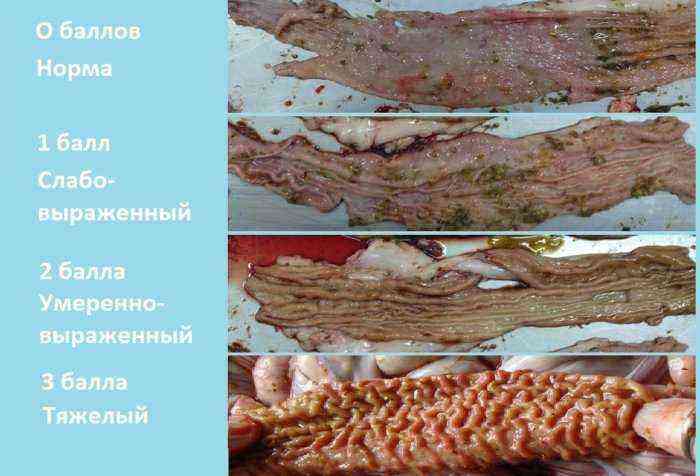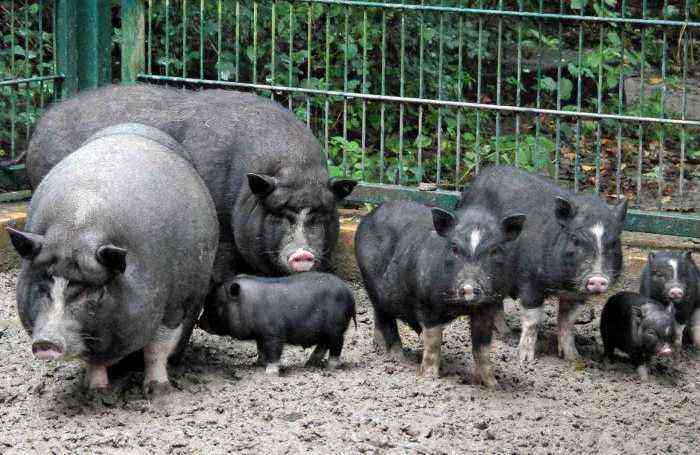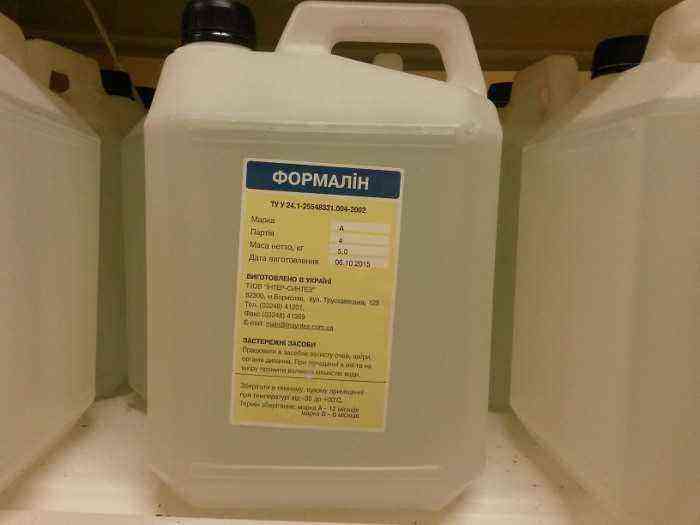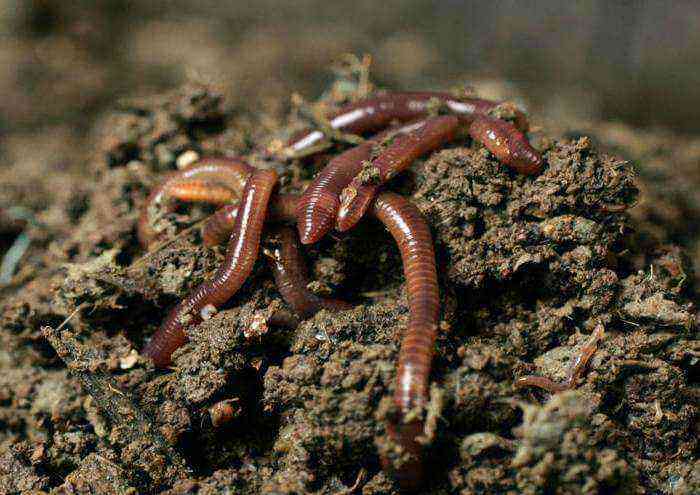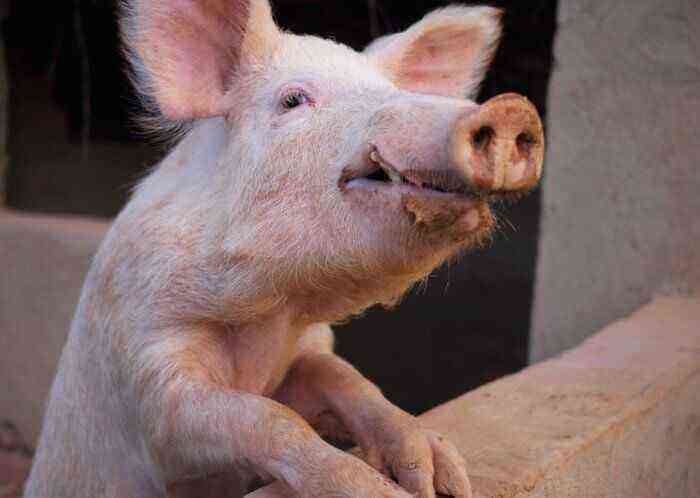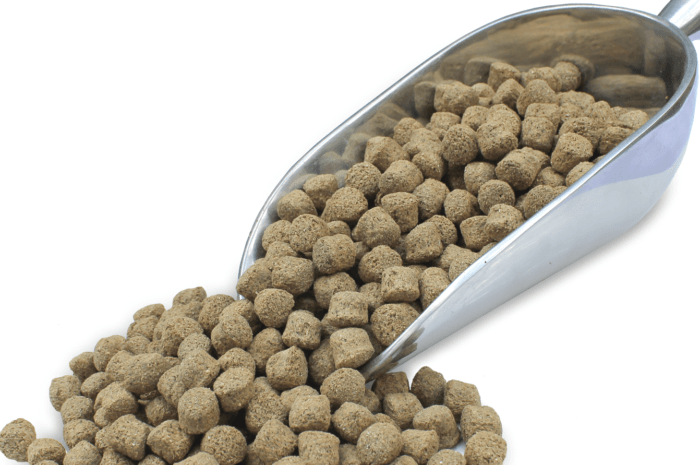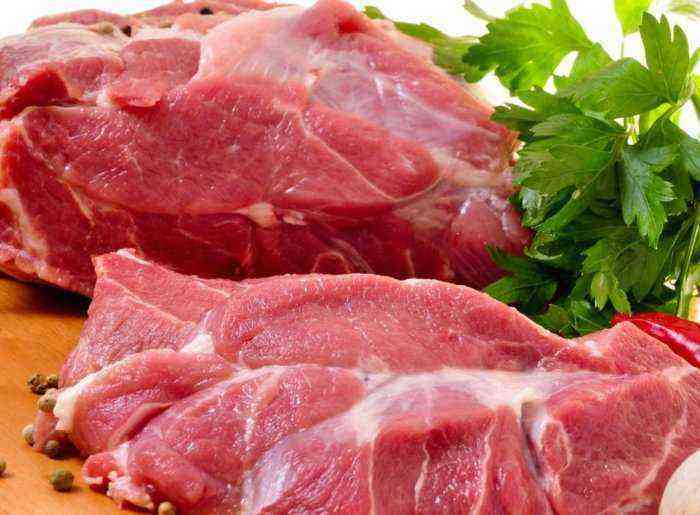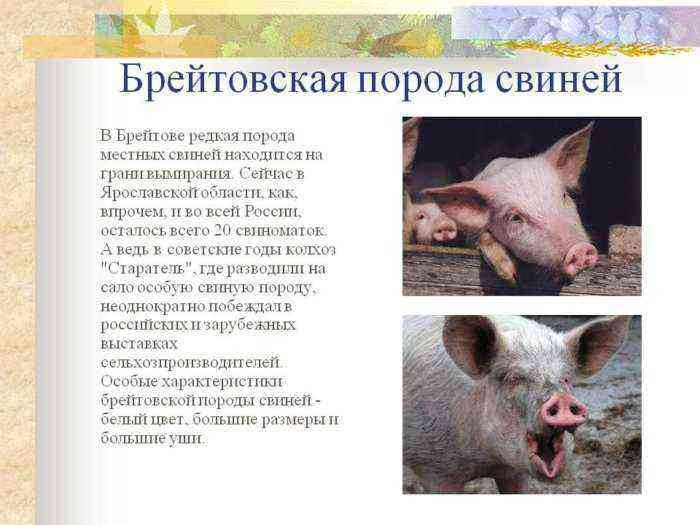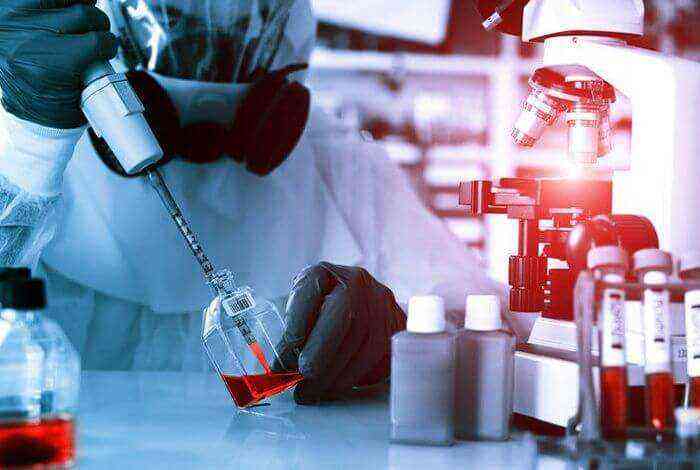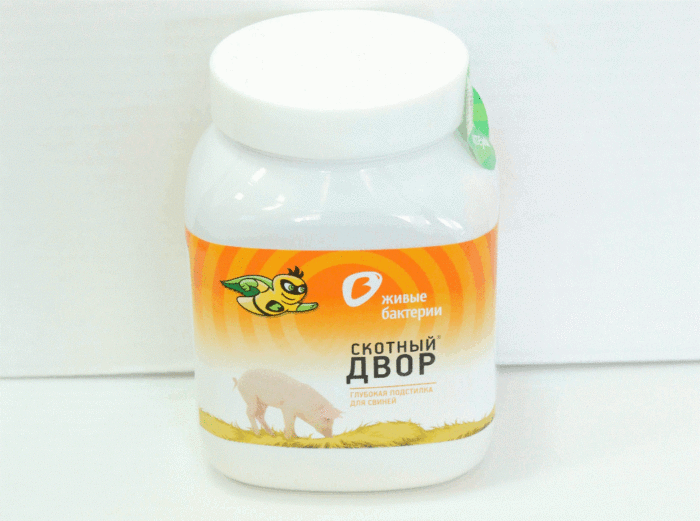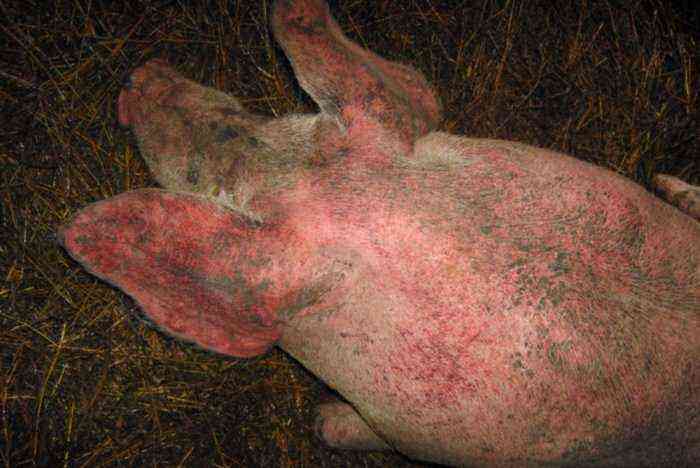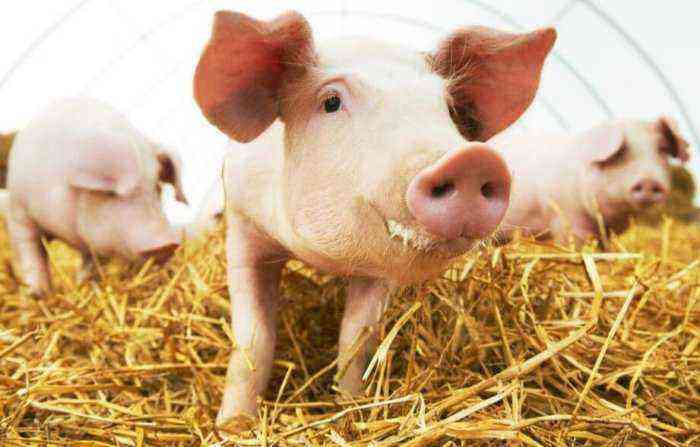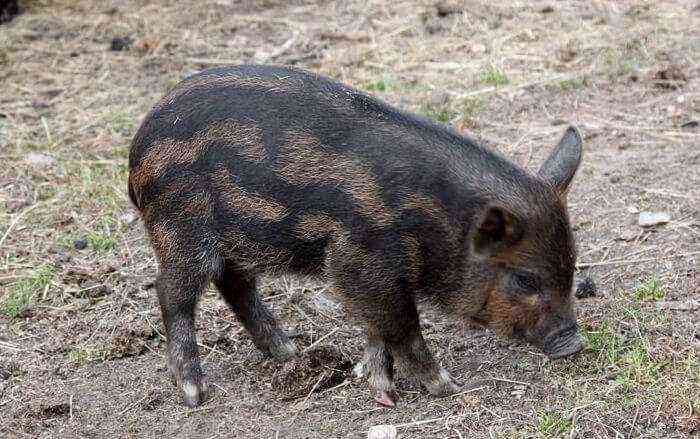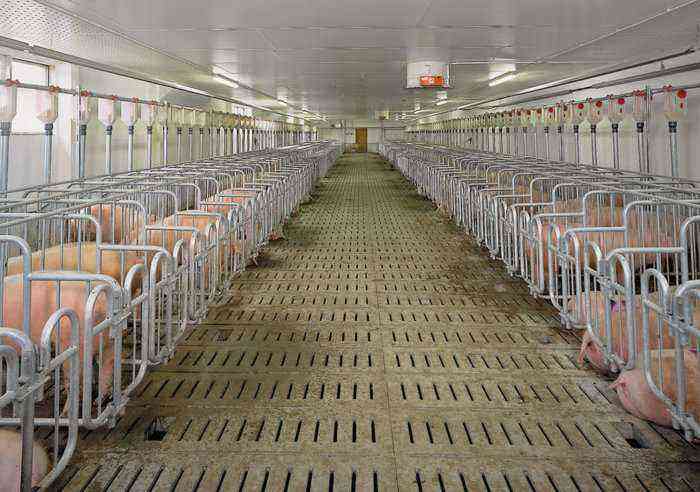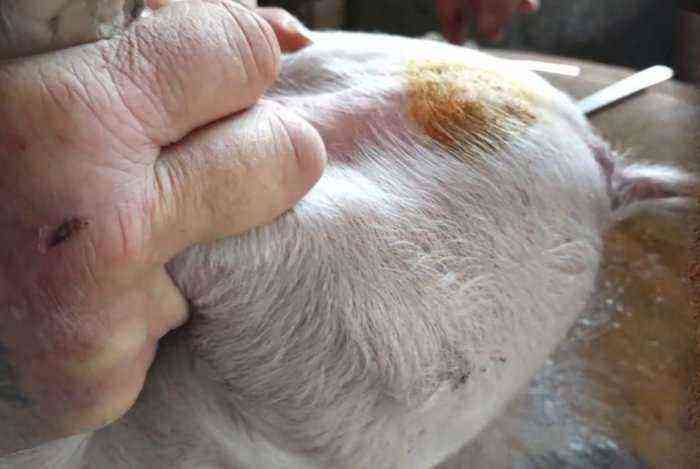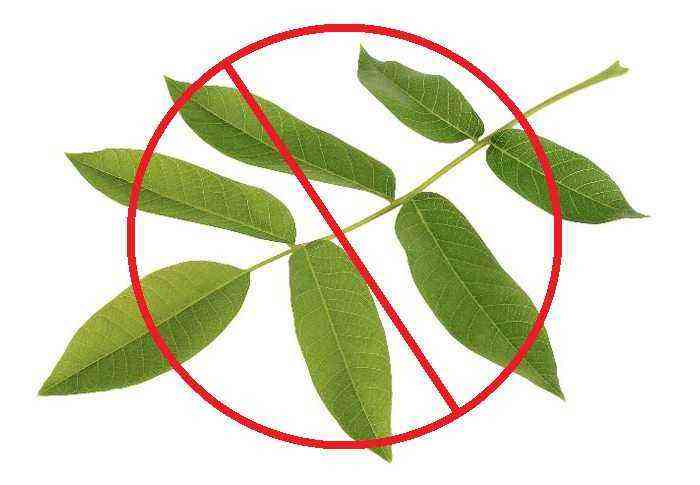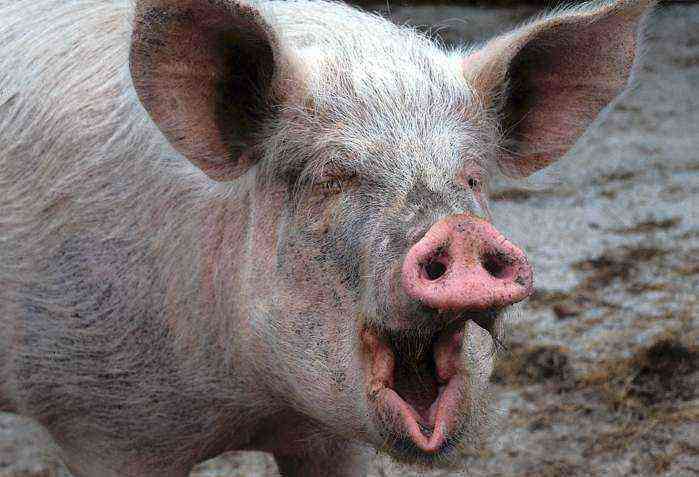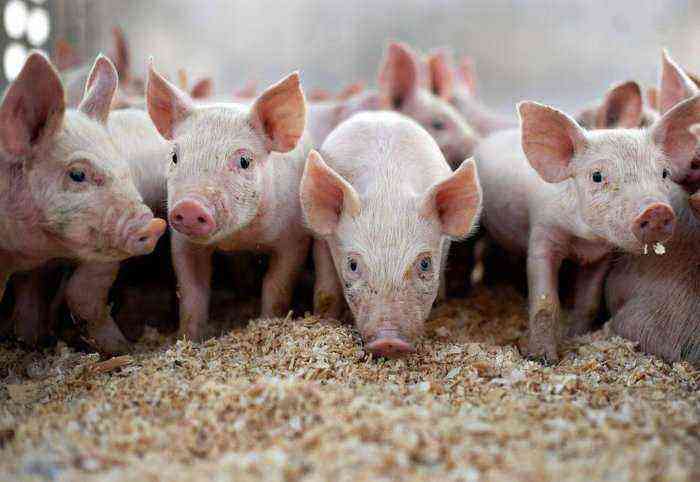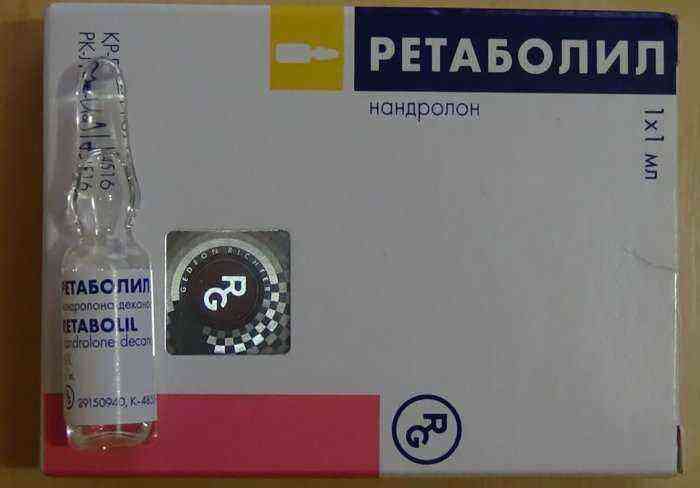Pig breeding is a profitable business, but the success of the business depends not only on the efforts of the farmer. Farm profitability is affected by many factors, such as diseases in pigs. From various infections and non-contagious ailments, animals can die, which will damage the farm. The owner of the livestock should have information about what the pigs and piglets are sick with, how certain diseases manifest themselves and how to help the animals.
Pig breeding
Signs of illness in a pig
Any serious illness always manifests itself. If an animal is unwell, this can be seen by its behavior and various symptoms. Consider the common signs of malaise in pigs:
- Depressed state, lethargy. In some cases, the animal shows anxiety.
- The pig burrows into the litter.
- Chair disorder. Many illnesses cause diarrhea. The chair at the same time may contain mucus, blood impurities. Sometimes the feces change color to greenish.
- Skin condition. A sign of the disease is the appearance of spots, bumps, abscesses on the skin of the animal. Sometimes even dryness and pallor of the skin indicates a deterioration in the condition of the pig.
- Loss of appetite.
- Cough.
- Discharge from nose, eyes.
- Nervous manifestations – convulsions, tilting the head, disorientation.
- Rapid breathing.
- Hot ears.
- Redness, bluish mucous membranes.
If you notice some symptoms in an animal, you should immediately take the temperature. To do this, it is better to use an electronic thermometer. Having lubricated the tip of the device with petroleum jelly, it is inserted into the anus for 2 minutes.
Pig temperature
The normal temperature in pigs older than a year is 38–38,7 degrees. In piglets and individuals up to a year – 39–39,5 degrees.
Attention! If a pig or piglet has a high temperature, the individual must be immediately placed in an isolation room so that other animals do not become infected, and then invite a veterinarian.
Classification of diseases
Conditionally diseases of pigs can be divided into 3 groups. These include:
- non-communicable diseases;
- infectious;
- parasitic (invasive).
Non-contagious diseases are not terrible for those adjacent to a sick individual, and also do not pose a danger to humans. But this does not mean that they can be ignored. In advanced cases, any ailment can take the life of an animal, which is unprofitable for the farmer.
Infectious diseases are those caused by viruses, bacteria or fungi. They are extremely dangerous for livestock, as they spread quickly. For most serious diseases, pigs are vaccinated at an early age, which helps protect the inhabitants of the farm from mortal danger.
Invasive diseases are caused by the introduction of parasites into the body of an animal. These can be skin parasites, such as mites, as well as various types of helminths. Invasive diseases are also contagious.
Non-communicable diseases
Non-contagious diseases of pigs include pathologies of the respiratory and digestive organs, to which the infection is not related. This also includes ailments caused by a lack of vitamins in the body.
Poisoning
Mistakes made in the nutrition of pigs can lead to serious disruption of the digestive tract. The animal can be poisoned by poisonous plants, salt, mold fungi. Signs of poisoning:
Pig poisoning
- weakness;
- refusal of food;
- diarrhea;
- trembling limbs;
- dilated pupils;
- thirst (with salt poisoning);
- convulsions;
- vomiting.
Treatment of poisoning includes gastric lavage through a tube, the introduction of antidotes if it is caused by poisonous plants. In any case, you need to consult a veterinarian.
Avitaminosis
Lack of vitamins in the body can lead to serious health problems. For example, with a lack of vitamins D and A, as well as trace elements of phosphorus and calcium, diseases develop – rickets and dystrophy, in which the skeletal system of animals suffers. With iron deficiency, piglets develop anemia. It is important to try to diversify the diet of livestock in order to avoid such problems. Treatment of avitaminosis involves replenishing the lack of vitamins and trace elements with the help of injections.
Blockage of the esophagus
This disease occurs when a foreign body enters the esophagus. You can detect the problem by the behavior of the pig:
- she is worried;
- stretches his head forward, trying to burp an object;
- refuses food and drink.
Esophageal obstruction in a pig
In this case, you should try to remove the foreign body from the esophagus or push it into the stomach with a probe.
Stomatitis
Inflammation of the oral mucosa occurs due to mechanical damage to the palate or lips while eating. If the animal’s immunity is weakened, an infection will penetrate into the wound, which will gradually spread to the entire oral cavity. The signs of the disease are:
- salivation;
- smacking while eating;
- poor appetite;
- unpleasant smell from the mouth;
- ulcers in the mouth.
Treatment includes treatment of the animal’s oral cavity with disinfectants – Furacilin, potassium permanganate, as well as Streptocide powder.
Other non-communicable diseases of pigs:
- gastroenteritis;
- dyspepsia;
- catarrh of the stomach;
- bronchopneumonia.
Infectious diseases
Diseases caused by infection should be feared, as they can kill all the animals on the farm in a matter of days. Consider a few examples of how pigs can get sick.
Aujeszky’s disease (false rabies)
This disease is caused by a DNA-containing virus belonging to the genus of herpesviruses. The incubation period lasts up to 3 weeks. The disease develops rapidly: animals die within 12 hours after the symptoms are noted.
Aujeszky’s disease in pigs
In adults, signs of infection are:
- foam from the mouth;
- curvature of the neck;
- convulsions;
- oppression or strong excitement;
- pigs take the pose of a sitting dog;
- temperature rises to 42 degrees.
Attention! Piglets have no visible signs of illness, they suddenly die.
There is no effective treatment for Aujeszky’s disease. For prevention, livestock vaccination is used.
African plague
The causative agent of African plague is an iridovirus containing a DNA molecule. The incubation period lasts up to 15 days, after which the symptoms of the disease appear:
- strong oppression – the animal lies almost all the time;
- cyanosis of the ears;
- heat;
- bruising on the skin in the groin and shoulder blades;
- purulent conjunctivitis;
- shortness of breath, shortness of breath, cough;
- disorders of the digestive system – diarrhea with blood or constipation.
Mortality from African plague reaches 90-100%. Individuals who managed to recover remain carriers of the virus. Treatment of this disease, as well as effective preventive measures, have not been developed.
Dysentery
swine dysentery
It is an intestinal disease of pigs caused by an anaerobic spirochete. It is transmitted through the alimentary route. Symptoms appear after the incubation period, which can last from 2 to 28 days. Signs of dysentery:
- Lack of appetite.
- Temperature increase.
- Diarrhea with impurities of blood, pus, mucus. In the feces, pieces of the intestinal mucosa are found. Diarrhea does not develop immediately, approximately 4-5 days after the first manifestations of the disease.
Treatment of dysentery is carried out with the help of antibiotics and sulfa drugs.
Erysipelas
The disease is caused by a highly virulent bacterium, the route of its transmission is mainly alimentary. The source of infection are sick animals and carriers of bacteria, as well as the corpses of dead pigs, manure and waste from slaughterhouses.
Symptoms of erysipelas vary, depending on the form, course of the disease:
- lightning fast;
- acute;
- subacute;
- chronic.
The fulminant form is extremely rare – in piglets with a weakened immune system that are kept in poor conditions. The acute form is characterized by an increase in temperature to 42 degrees, diarrhea, which alternates with constipation, and vomiting occurs. With such a course of erysipelas, the work of the heart is disrupted, so shortness of breath occurs and blue skin in the abdominal region and neck is observed. Already on the second day after the onset of the first symptoms of erysipelas, characteristic spots of red-pink color appear on the skin.
Attention! It is important to start treatment immediately, otherwise death will occur in 3-5 days.
In individuals with strong immunity, the disease proceeds more easily, in the form of urticaria (subacute course), and disappears after 10-12 days. Consider the symptoms characteristic of a subacute form of erysipelas:
- strong thirst;
- body temperature about 41 degrees;
- convex spots of unusual configurations appear on the skin – a rhombus, a triangle.
The lack of treatment of the subacute form of erysipelas can lead to a chronic form of the disease, which is characterized by skin necrosis, joint damage, and the development of endocarditis.
For the treatment of erysipelas, broad-spectrum antibiotics, drugs that regulate the functioning of the heart, antihistamines, antipyretic drugs, and vitamin-mineral complexes to strengthen the immune system are used.
Parasitic diseases
Diseases caused by parasites: helminths, mites, unicellular protozoa – cause harm to the health of pigs. They are also transmitted from one individual to another, and therefore require timely diagnosis and treatment. These include:
Ascariasis of pigs
- ascariasis;
- trichinosis;
- cysticercosis;
- diseases from ticks (skin parasites).
Ascaridosis
The disease is caused by roundworm nematodes. Worm eggs enter the body of pigs along with contaminated food and water. Most often this happens while walking in the pasture. Swallowed eggs pass into the intestines. There they turn into larvae, penetrate into the intestinal mucosa, from where they migrate with the bloodstream to the bronchi and lungs. During their migration, pigs begin to cough, so the disease is easily confused with bronchopneumonia. From the bronchi, the larvae are coughed up with mucus, swallowed and enter the intestines. There, the larvae are already turning into adults. Ascaris are able to live in the intestines for several months.
During the period of ascaris migration, the symptoms are similar to bronchopneumonia:
- increased body temperature;
- the pig is coughing;
- shortness of breath;
- teeth grinding;
- convulsions are sometimes observed.
In the future, when roundworms are already parasitic in the intestines, the symptoms are not so obvious. Piglets have a lack of appetite, animals lose weight, they often have diarrhea and constipation.
Treatment of ascariasis is carried out with the help of anthelmintic drugs. Albendazole, Fenbendazole, Piperazine, Febantel help from these parasites.
Attention! Timely deworming of livestock helps to avoid the spread of ascariasis on the farm.
Trichinosis
The causative agent of trichinosis is the small nematode Trichinella. It enters the body of pigs when eating meat feed, which contains larvae dressed in capsules. When entering the stomach, the protective shell is destroyed. A larva emerges from it. In less than 2 days, she is capable of fertilization. Males then die, and females give birth to live larvae. They penetrate into the muscle fibers of the animal, grow there and encapsulate, curled up into a spiral. Females that have produced offspring die after 2 months and are excreted from the body with feces.
Trichinosis pigs
Symptoms:
- loss of appetite;
- allergic reactions (in the form of a rash on the skin);
- swelling and inflammation of the muscles;
- temperature rise.
Treatment is carried out with the help of the drug Mebendazole (Vermox). In some cases, it is advisable to use injections of glucocorticosteroids to relieve swelling and inflammation in the muscles.
Cysticercosis
The causative agents of cysticercosis in pigs are the larvae of the helminth Taenia hydatigena, which parasitizes in the intestines of humans. Animals become infected by eating grass contaminated with the faeces of a person whose body is parasitized by tapeworm. Swallowed eggs and segments of the helminth penetrate into the intestines of the pig, where their shell dissolves. The larvae spread throughout the various organs of the animal. The disease is usually asymptomatic. In case of severe damage, the following signs of infection may appear:
- epileptic seizures;
- swelling;
- amyotrophy.
Reference. When cysticerci infect the heart, the animal dies.
Diseases from ticks
Various types of mites cause skin diseases in pigs. Consider 3 common ailments:
- sarcoptosis;
- acarosis;
- demodicosis.
Ticks on a pig
The symptoms of the first two diseases are similar, despite the fact that they are caused by different types of mites that penetrate the epidermis and multiply there:
- papules, nodules appear on the skin;
- the animal is worried because of itching;
- scratches appear in the head, ears, and also throughout the body;
- over time, the skin becomes covered with crusts.
The third ailment, demodicosis, differs from the two above in that pathogen mites parasitize in the hair follicles and sebaceous glands. Ticks destroy them, because of which the bristles begin to fall out in animals, and thickenings and thickenings of a yellowish tint form on the surface of the skin.
Attention! All diseases caused by ticks are contagious and dangerous, as they can be complicated by a bacterial infection.
Treatment includes the use of drugs in the form of sprays and ointments against ticks – Butox, Dicrezil, Neostomazan. Good results are achieved after intramuscular injections of Ivermek.
What diseases do piglets have?
Piglets are more prone to various diseases. The most common of them are edematous disease, anemia, hypoglycemia, rickets.
edematous disease
Mortality from this disease, if it is acute, reaches 100%. It is caused by Escherichia coli. Piglets weaned from their mothers are at risk. Favors the development of the disease food rich in protein.
Symptoms:
- swelling of the eyelids and head;
- convulsions;
- temperature increase;
- rapid breathing;
- cyanosis of the patch and ears.
Treatment is effective if started at the first sign of illness. Therapy for listeriosis is carried out with the use of cephalosporin antibiotics, sulfa drugs, antihistamines.
Hypoglycaemia
This disease develops in piglets in the first days of their life due to lack of nutrients and hypothermia. The symptoms of the disease are:
- blue auricles, limbs and patch;
- temperature drop;
- convulsions.
Insulin
Treatment of hypoglycemia includes the administration of insulin and glucose intramuscularly, as well as preparations containing thiamine.
Attention! Hypoglycemia can be avoided if sows are properly fed during gestation and after birth, and if newborns are applied to the mother’s nipple in time to drink colostrum.
Nutritional anemia
Lack of iron in the body of piglets causes alimentary anemia. Without exception, all babies begin to receive iron injections 3-4 days after birth. Signs of anemia are:
- pallor of the skin;
- faded bristles;
- loss of the sucking reflex;
- lethargy.
Rickets
Considering the diseases of piglets, it is worth mentioning rickets. It develops due to a lack of vitamins A and D, as well as phosphorus and calcium in the body of animals. Rickets is characterized by softening and deformation of bone tissue. In sick individuals, lameness, digestive disorders, and stunting are observed. Animals, in order to make up for the lack of vitamins, begin to eat food that is unusual for them – they gnaw at the feeder, lick the walls.
Prevention will help to avoid the disease – the introduction of fish oil, chalk into the diet. Piglets should be regularly sunbathed.
Diseases in pigs on the farm are undesirable, they can cause serious damage to the farm. Therefore, the owner of the animals must be careful to adhere to the pig vaccination schedule in order to protect the farm from dangerous infections. It is important to invite a veterinarian to examine animals at the first sign of illness, before it is too late to start treatment. Then the business will flourish.

